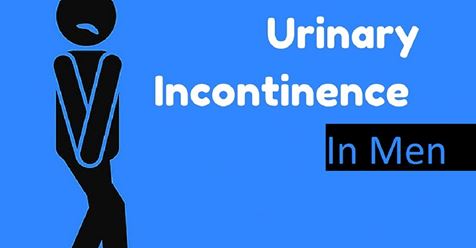
Urinary Incontinence in Men
Urinary incontinence (UI) in layman’s terms can be defined as the unintentional or accidental loss of urine. Academically speaking, there are three forms of UI and those are stress incontinence, urge incontinence and overflow incontinence.
• Urge Incontinence takes place when one has a distinct urge to urinate that cannot be stopped.
• Overflow Incontinence is a condition associated with a constant dribbling of small amounts of urine.
A discussion on the causes of Urinary incontinence (UI) in men would be useless without first understanding the premise that urine flow is kept in check by the cohesive action of both muscles and nerves. Muscles keep the urine in, and nervous control regulates when to loosen the muscles. An issue in either muscle or nerves, therefore, disrupts the balance and causes one to lose control of their urine. For example, neuropathies commonly seen in cases of long standing diabetes, or even Multiple Sclerosis, can affect nervous control and result in one forfeiting autonomic control of their bladder. The same is seen in spinal cord injuries, as the bulk of nerves in the body travel through the cord.
Prostate problems can also give rise to Urinary incontinence (UI) in men. The prostate, a gland circumscribing the urethra at the point where it exits the bladder is often enlarged in elderly males. It’s an organic process, and does not signify any abnormality.
Diagnosing Urinary incontinence in men is a relatively straightforward procedure. To begin with, your physician will ask you some basic questions about how often you void and how much water you drink a day, he may even ask you to document a ‘voiding diary’ in which you make a note of how often you need to go to the bathroom in a day, along with whether you experience any other symptoms like dribbling.
If prostatic enlargement is suspected, your physician may confirm it with one of two methods: a digital rectal exam involves inserting a gloved finger in the patient’s rectum to check for prostatic enlargement, alternatively, an abdominal or per-rectal ultrasound is commonly used.
Okay, so you’ve run the tests and it’s not confirmed that you have urinary incontinence. What do you do next? First line treatment consists of exercises to strengthen the muscles that hold urine in and prevent it from escaping. Kegal Exercises work wonders at building urinary control by training your pelvic muscles to stay firm. Look up tutorials on YouTube if you’re interested! When all else fails, it’s fairly common to fall back on medication to treat UI.

